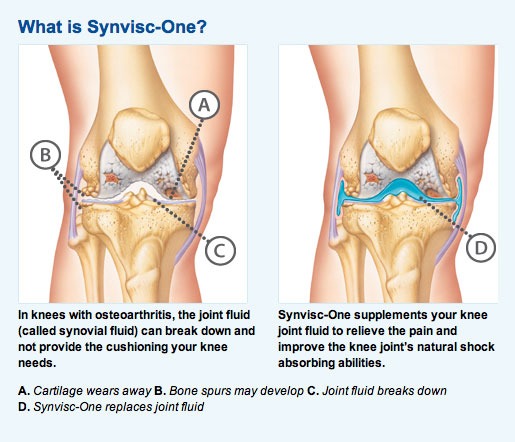Synvisc injections are a type of treatment used to alleviate pain and discomfort in individuals suffering from osteoarthritis, a common joint condition that affects millions of people worldwide. This non-surgical treatment involves injecting a gel-like substance called hyaluronic acid into the affected joint to provide cushioning and reduce friction between bones. In this blog post, we’ll take a closer look at what Synvisc injections are, how they work, and their potential benefits and risks.
What are Synvisc injections?

Synvisc injections are a type of viscosupplementation therapy, which involves injecting hyaluronic acid into the joint to improve its lubrication and reduce friction between the bones. Hyaluronic acid is a natural substance found in the body’s joints and is responsible for providing cushioning and shock absorption. However, in individuals with osteoarthritis, the levels of hyaluronic acid in the joint decrease, leading to pain and discomfort.
Synvisc injections are a form of hyaluronic acid that is derived from rooster combs and formulated to mimic the hyaluronic acid found naturally in the body. They are administered directly into the affected joint in a series of three to five injections over a period of several weeks, with each injection spaced out by one week.
How do Synvisc injections work?
The goal of Synvisc injections is to improve joint function and reduce pain by providing additional lubrication and cushioning to the affected joint. The hyaluronic acid in the Synvisc gel acts as a shock absorber, reducing the pressure on the joint and allowing for smoother movement. Additionally, hyaluronic acid has anti-inflammatory properties that can help reduce swelling and inflammation in the joint, further improving joint function and reducing pain.
Benefits of Synvisc injections
Synvisc injections have several potential benefits for individuals with osteoarthritis, including:
- Improved joint function: Synvisc injections can improve joint function by reducing friction and providing cushioning to the affected joint.
- Reduced pain: Synvisc injections can help reduce pain and discomfort in the affected joint, allowing individuals to perform daily activities with less pain.
- Non-surgical: Synvisc injections are a non-surgical treatment option, which means that there is no need for extensive recovery time or rehabilitation.
- Minimal side effects: Synvisc injections are generally well-tolerated and have few side effects, making them a safe and effective treatment option for many individuals.
Risks of Synvisc injections
Like any medical procedure, Synvisc injections come with some potential risks and side effects. These can include:
- Pain or swelling at the injection site.
- Infection at the injection site.
- Allergic reaction to the hyaluronic acid in the Synvisc gel.
- Blood clots or other complications in rare cases.
It is important to discuss the potential risks and benefits of Synvisc injections with your healthcare provider to determine if this treatment is right for you.
Conclusion
Synvisc injections can be an effective treatment option for individuals with osteoarthritis who are experiencing pain and discomfort in their joints. This non-surgical treatment works by providing additional cushioning and lubrication to the affected joint, improving joint function and reducing pain. While Synvisc injections have few side effects, it is important to discuss the potential risks and benefits with your healthcare provider before undergoing this treatment.
If you would like more information, please call us at (416)259-0910.

